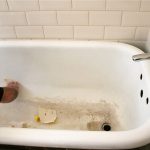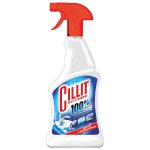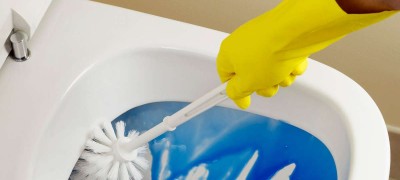How to clean your bathtub at home
The bathtub is an important part of the bathroom, it is found in every home. We are scrupulous about purchasing it, because the purchase is expensive and is carried out for a long period. The bath requires high-quality care, because not only the appearance of the product, but also human health depends on its cleanliness.

However, over time, due to constant use, plumbing loses its former snow-white and shine. This is due to soap and dust deposits, violation of operating rules and even, possibly, due to improper care. Therefore, an important question is how to clean the bathtub correctly, which bathroom cleaner is better to use. Let's figure it out.
- How to choose the right cleaning fluid
- Cleaning agents for cast iron baths
- Cleaners for acrylic bathtubs
- Cleaning products for enamelled bathtubs
- Cleaning products for steel baths
- Folk remedies for cleaning
- How to clean the bathroom properly (cleaning steps)
- How to clean an old bathtub
- What can not be used for cleaning
- General bathroom care guidelines
- Video: how to clean a bath with home remedies
How to choose the right cleaning fluid
The main prerequisite for preparing for our cleaning is the choice of a cleaning agent for the bathroom. There are universal products that remove any dirt and are suitable for daily care and highly targeted - designed to remove certain types of dirt. In this case, it is necessary to decide what is the nature of the spots that have appeared on the bath, for example:
- soapy deposits - quickly appears even on recently purchased plumbing as a result of the use of gels, shampoos and soaps;
- drops of water on the taps and traces of it - it is important to remove it in a timely manner, since they lead to the formation of limescale, and it will not be so easy to remove it;
- colored stains - formed in the event of a violation of operation, for example, with inaccurate hair dyeing, spillage of dyeing liquids;
- rust - manifests itself due to the failure of general pumping equipment or due to poor quality water;
- mold - occurs when there is poor air circulation and, as a result, high humidity;
- colored spots - a consequence of inaccurate hair dyeing at home, they pour brilliant green, potassium permanganate;
- repair consequences - for example, sealant mortar, plaster, white sediment.
And, of course, the bath cleaning liquid is selected taking into account the characteristics of the material from which it is made.
Cleaning agents for cast iron baths
A cast-iron product is appreciated for the fact that, due to its increased strength, it can last even 50 years.However, cast-iron baths have an enamel coating, which is prone to rust, lime and greasy deposits, and requires gentle and careful handling. The following cleaning agents are considered the most recommended.
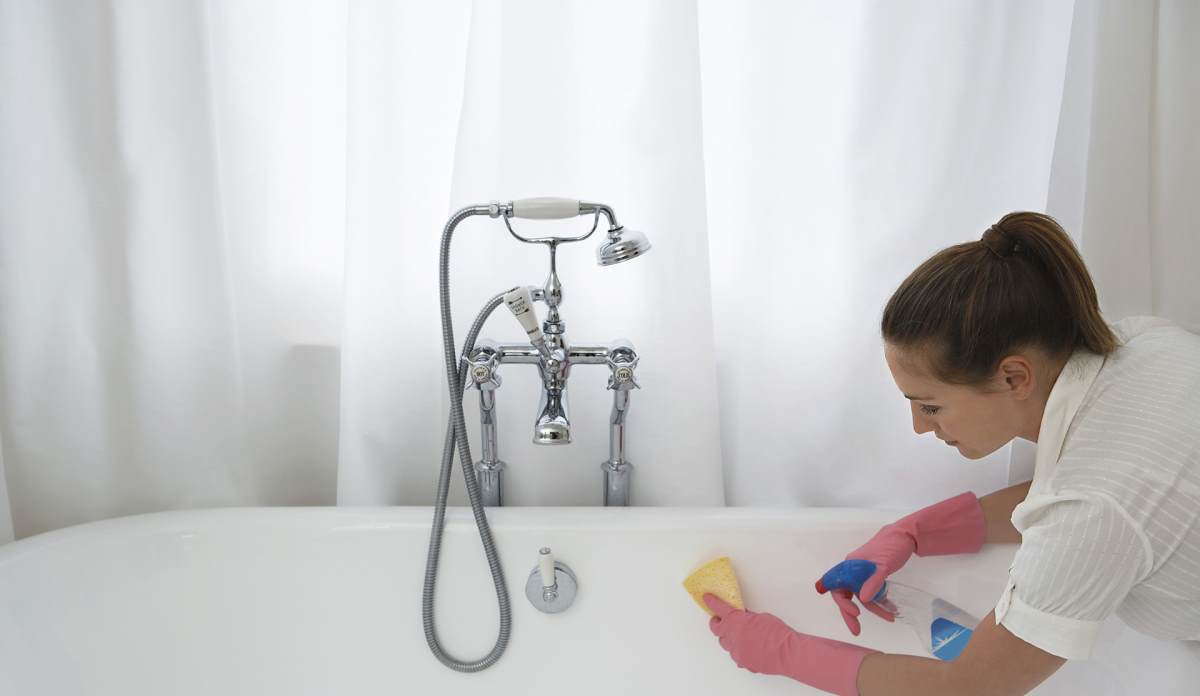
White
The most affordable remedy and often chosen by housewives, ideal for constant use, it has strong antiseptic properties, allowing you to get rid of mold and bacteria. Will not cope with stubborn dirt such as lime and rust.

Important! Mixes up with water in a ratio of 1: 2, in its pure form it is never used. You can also fill the container with water and add 100 ml of whiteness, leave overnight.
Mister Muscle
An advertised and really effective formulation that can penetrate deeply into dirt molecules and break them down from the inside. Unlike whiteness, it has a pleasant odor, does not irritate the skin and removes lime deposits.

Cif
One of the favorites when cleaning enamel, the more costly one, but it handles any unpleasant stain, even heavy rust, has a pleasant creamy texture.
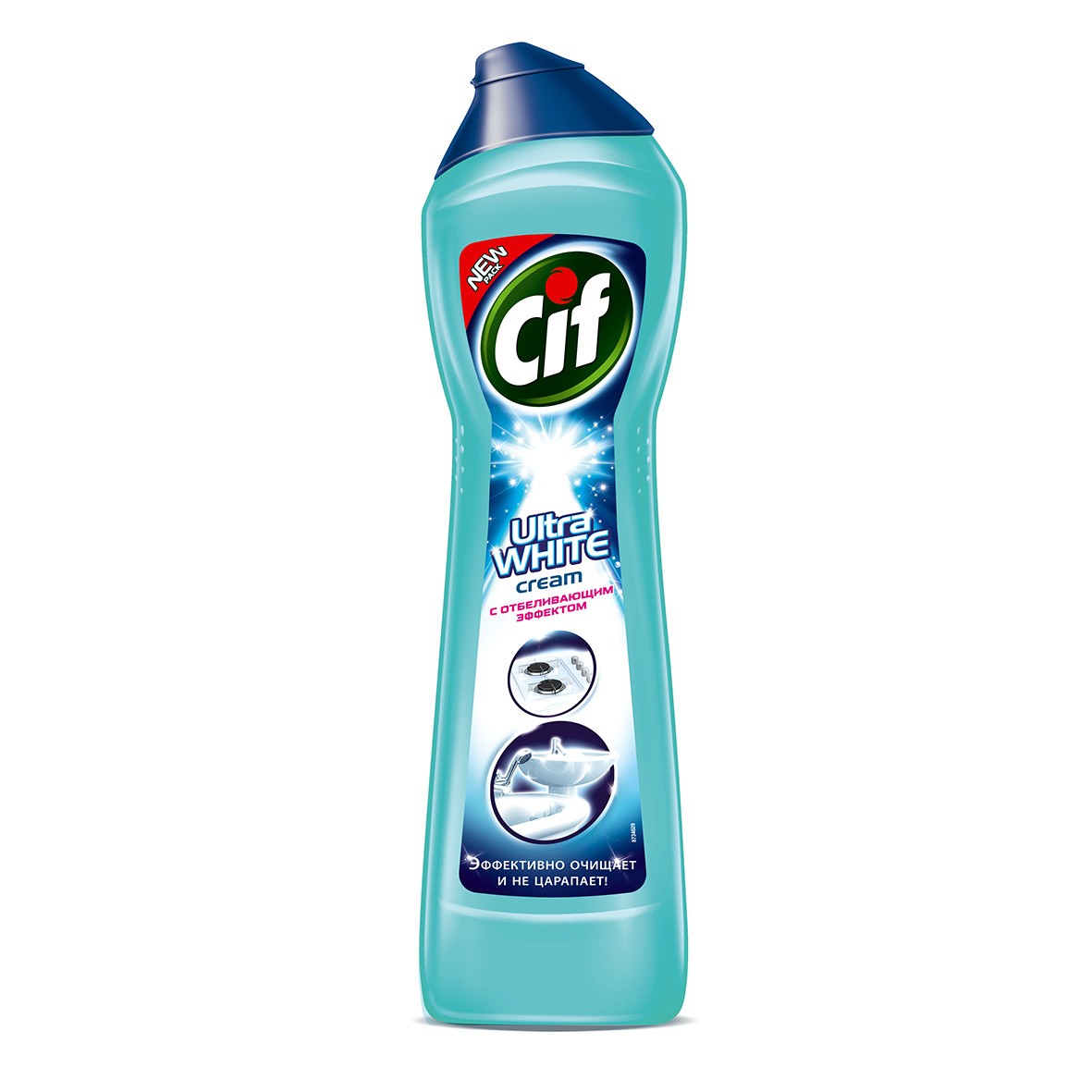
Comet
A popular detergent produced in the form of a washing gel, which is enough to apply to the problem area and clean it with a sponge after ten minutes.
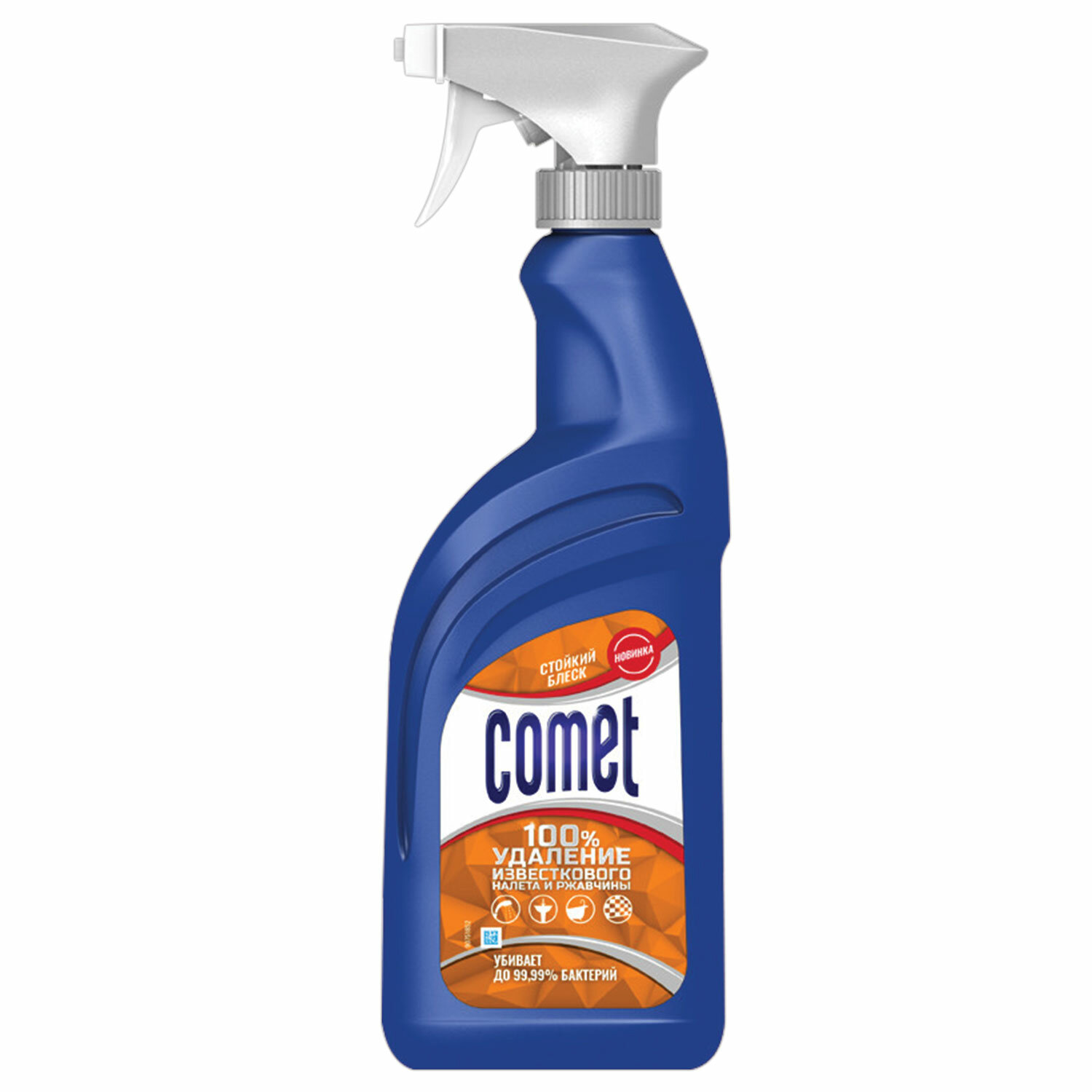
Cleaners for acrylic bathtubs
Acrylic bathtubs are distinguished by their increased comfort and rich appearance, however, they are very sensitive and need special delicacy. If you buy unsuitable household chemicals, you can make the plumbing unusable from the very first time, a high content of abrasive substances can affect the occurrence of yellowness and scratches.

Therefore, it is necessary to clean the acrylic bath with non-aggressive compounds that do not contain chlorine and solvents, in no case of a powder type. The most suitable options are presented below.
- Bagi Akrilan. It is a foamy detergent specially formulated for acrylic surfaces to tackle stains of any complexity. After cleaning, a film remains on the acrylic, protecting it from damage and excess plaque. Disadvantages include pronounced odor and high price.
- Frosch. Antiallergenic composition of natural materials, namely, fruit oxidants, with a delicate aroma, completely safe for both acrylic and humans. Suitable for regular removal of small dirt, however, it should be borne in mind that the product will not cope with disinfection and complex dirt.
- SanClean is a universal option suitable for any delicate surfaces, as it does not contain phosphates and abrasives.
- Cif has also been used successfully for cleaning acrylics.
Important! Do not use household chemicals for acrylic type sanitary ware too often, as well as hard brushes. Do not bathe pets without a special pad to avoid claw marks.
Cleaning products for enamelled bathtubs
Enamel baths require the same maintenance as enamelled baths, whiteness, Mister Muscle, Comet and Sif are also suitable for cleaning them.
Sun Wedge and Mister Chister are gentle and inexpensive means.
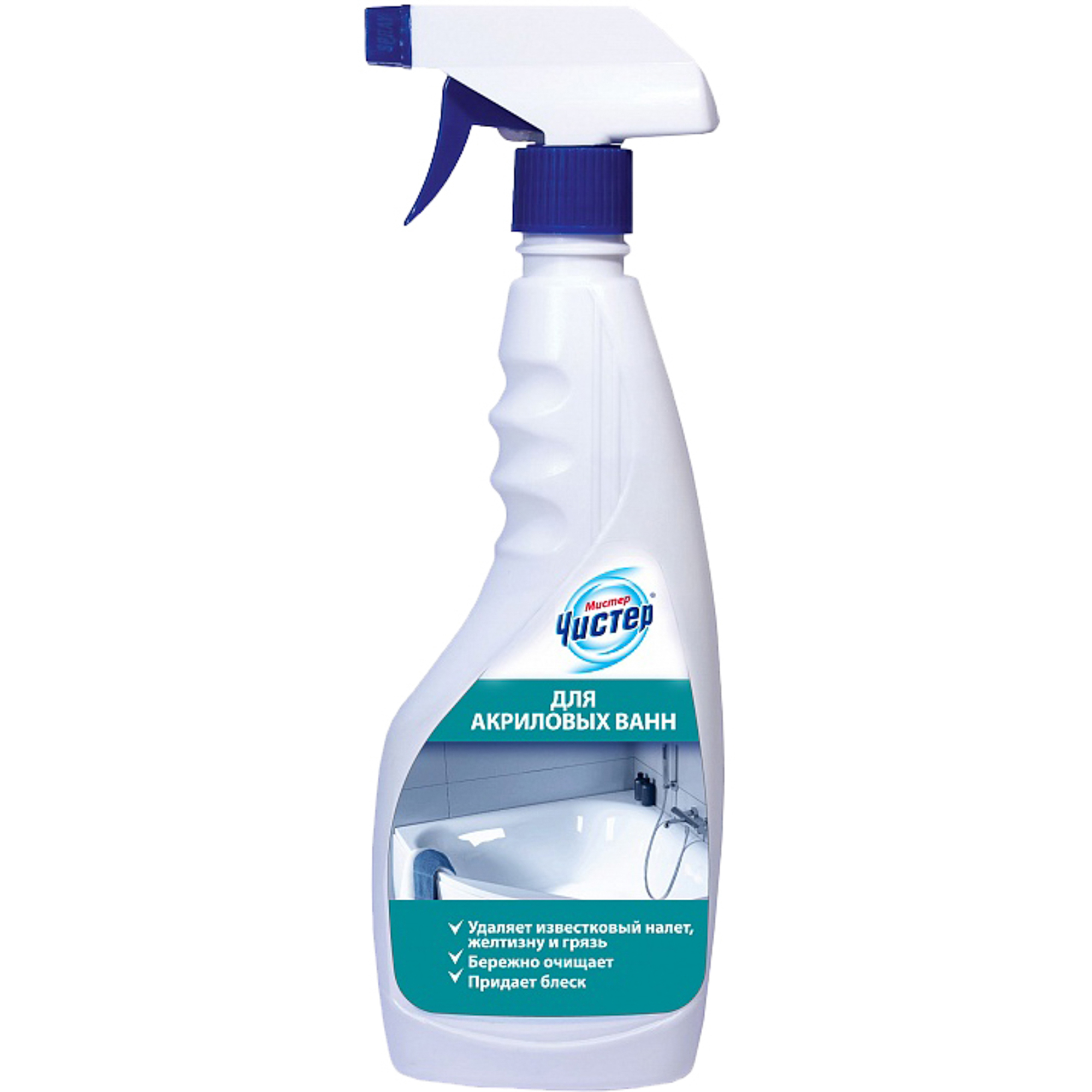
Cleaning products for steel baths
Steel baths are also covered with enamel, but with a thinner layer, therefore, they require accuracy to a greater extent than cast iron material. For them, it is also good to use Cif, Akrilan and Frosch, but Silit or Sanox, which easily destroy rust and lime build-ups, are best used one-time, since their composition can lead to the destruction of enamel spraying.
Folk remedies for cleaning
Of course, home remedies are softer and more delicate, they can be used to remove not very stubborn stains and do not lead to a loss of the effect of the novelty of plumbing. Even if you need to clean the bath from rust at home, it can be done without buying unnecessary chemicals, using folk experience.
Hydrochloric acid or oxalic acid removes rust and dirt from metal. To do this, you need to carefully, with gloves, apply the composition only to the desired metal part and after a while rinse thoroughly with water.

Important! Avoid getting the compound on chrome parts, this will damage them.
By treating problem areas with a solution made from a pack of citric acid and 250 ml of water, you can get rid of traces of corrosion. The remedy will become even more effective if you add natural lemon juice to it.
If you cover the surface with table vinegar and leave for a few minutes, you can completely get rid of lime, mold and mildew, and baking soda can easily destroy lime deposits. Therefore, an experienced housewife, to create an effective solution, mix a small amount of soda and
100 ml of 9% vinegar and heated to 70 degrees.

How to clean the bathroom properly (cleaning steps)
The stages of cleaning, regardless of the chosen product, are as follows:
- application of the solution;
- exposure for about 15-20 minutes;
- flushing.

1-2 times a year to remove lime, you can fill the bath with water, add the agent and soak overnight.
Important! Remember that many chemicals can dry the skin and even cause burns and allergic reactions, so work with gloves and ventilate the area, you can even use a respirator.
How to clean an old bathtub
Old plumbing loses its former attractive appearance, becomes covered with numerous dark spots, rust, has scratches and coating defects. Yellow stale plaque must be removed with a solution of 2 liters of water and 1 tbsp. l. ammonia spray applied. For greater effect, alcohol is mixed with hydrogen peroxide. Rust and drips are removed with turpentine. But cracks can only be removed through restoration, which is not always justified.

What can not be used for cleaning
It is better not to purchase powders and any loose household composition, as they can scratch the surface. Products cannot be washed with gasoline, acetone, chlorine. When working with enamel, it is not allowed to use abrasives, for example, Pemolux.
Do not buy metal sponges or hard brushes to remove enamel for cleaning plumbing. It is better to soften the contamination first with cleaning agents, and then wash it off with a soft sponge.

General bathroom care guidelines
To prevent premature wear and tear on your bath, follow the basic care requirements. Wipe dry metal and chrome parts from drops, this will prevent the formation of rusty and limescale. 1-2 times a week, thoroughly clean the bathtub with a well-chosen product, repair damage in a timely manner, and replace individual parts if necessary.
Keep the tiles and the toilet clean if the bathroom is combined. Do not use water above 65 degrees. Remove blockages in time. Ventilate and dry the bathroom. Keep household chemicals closed in special containers and out of the reach of children.

Taking care of the bathroom is not a difficult task, it is only important to immediately choose and buy a set of products necessary for this and adhere to simple rules. We hope that our article will help you, and you will find the way that will effectively and carefully clean your bathroom corner, so that it is white and fresh, like new.
Video: how to clean a bath with home remedies



